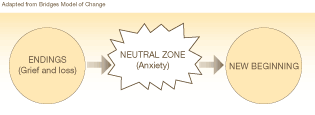By Kathleen M. Hosfeld
Companies engage in sustainability initiatives in stages. Starting small, and usually with operations-oriented steps, companies’ first experience with sustainability is focused on saving money. Creating new revenues from sustainability happens at deeper stages of engagement. At these deeper stages, marketing, which may have been only peripherally involved before, now plays a strategic role in creating new opportunities to fulfill sustainability’s potential to the company and to stakeholders.
We’ve written before about the various stage models of sustainability engagement and how marketing shows up at each stage. In the early stages, when companies are experimenting with waste, energy and resource management issues, their focus is on cost savings. This doesn’t translate well to marketing action, although in some rare cases, such as Cisco’s used equipment recycling program, it can become a new line of business.
Changes in the environmental features of products and services that occur in the middle stages of sustainability engagement can prompt marketing departments to redefine their respective value propositions. They can also activate marketing’s promotional, publicity and public affairs capacities to manage perceptions around green washing (allegations of superficial claims of environmental benefits).
At the deeper levels of sustainability engagement, where companies seek to fully integrate sustainability into product and service design and business model development, marketing plays a strategic role. At this stage, the ability to research and interpret customer wants and needs is essential to tapping the top line potential of the commitment to sustainability. It’s a significant opportunity for marketing to make a strategic contribution to the direction and focus of the organization.
Team-Based Innovation Planning: Baking it In
Up to this point, the changes the company has been undergoing are technical changes. You can hire a consultant to help you conduct a lifecycle analysis, measure your carbon footprint, advise on resource, energy and waste strategies. But redesigning and re-imagining whole products, services and lines of business from a sustainability standpoint is “adaptive change.†At this stage, sustainability has been bolted on, now the task is to bake it in from scratch. It’s probably not something that anyone in the organization has done before. As a result, executives assembling and commissioning teams to do this work need to consider how best to convene, commission, guide and support them.
Start from the Future – In the September 2009 edition of Harvard Business Review, R. Nidumolu, C.K. Prahalad, and M.R. Rangaswami write about research they have conducted with 30 companies integrating sustainability into their operations. “Don’t start from the present,†they advise. Rather, start from a desired future state and work back. When Hosfeld & Associates works with clients on these issues we like to start with the question: “What is the change we want to see in the world because of our work?†What business should we be in as a result?
Feed the Process With New Insights – At this stage of sustainability engagement, customers and other stakeholders can play a co-creative role. Effective design and implementation of customer and stakeholder research can tap insights that will feed the innovation process. Marketing specialists on the innovation team best help other departments interpret research and learn how to understand customer needs. Great ideas can also come from anywhere in the organization. Effective approaches to sustainability innovation will tap the hidden genius of the organization.
Build Engagement From the Start — The result of the planning process will be a strategy that must be implemented. As my colleague Ron Benton says “to be effective, strategy has to be constructed and owned by those who execute it.†This means creating cross-functional teams across organizational silos that can work together to solve complex problems. It also means creating opportunities for engagement during the planning process with those who may not participate directly in it.
Mitigate the Challenges of Change – As an adaptive process, strategic sustainability innovation has the potential to create anxiety. It’s important to anticipate the anxiety of change and provide innovation teams with new tools. Building the team’s capacity to have fearless, frank and authentic dialogue and move quickly through areas of disagreement is fundamental. This means using conflict and resistance as tools for learning. Clear objectives and metrics can also provide guidance and support for making good decisions, assuring engagement and supporting execution.
Keep It Moving – If the goal is competitive advantage, strategic sustainability innovation can’t get hung up on internal turf squabbles, or get squashed by the tyranny of day to day operations. Organizations seeking this type of advantage must support teams with clear direction and the resources to keep it a top priority.
——————
If you are interested in knowing more about how to integrate marketing’s capacity for innovation with your sustainability initiative, please contact us.
Check out the Sustainability and Innovation edition “How Green Will Save Us” Harvard Business Review




 Organizations Can Experience the Stress of Change When Implementing New Branding or Marketing Strategies
Organizations Can Experience the Stress of Change When Implementing New Branding or Marketing Strategies